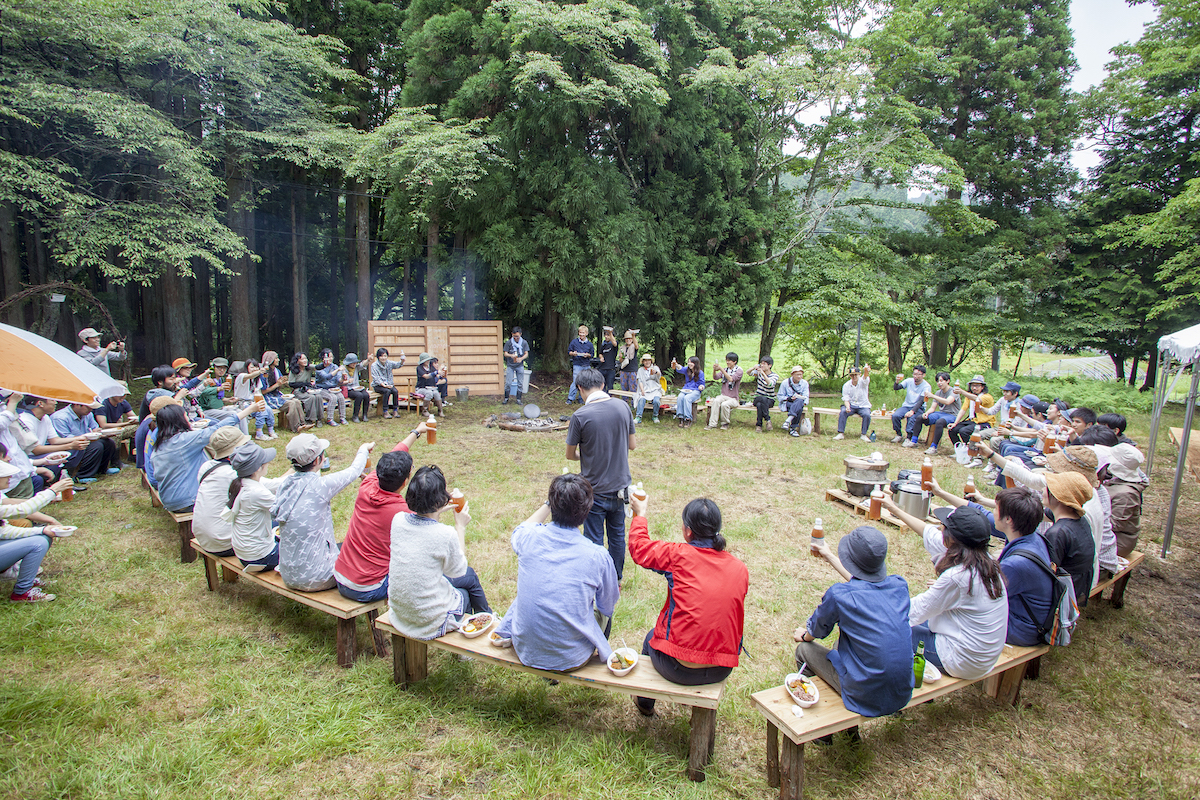Submitted by Mariko Sugita
Research for Architectural Domain celebrates its 10th anniversary
Japan Architecture News - Dec 19, 2018 - 22:21 22598 views

RAD (Research for the Architectural Domain) was founded in 2008, as a platform to pursue collaborative research-based practice in the field of architecture and urban design in Japan. This year, they are celebrating its 10th anniversary and spoke to World Architecture Community to share their ideas about the art of research.
"Research" as a performative act
RAD (Research for the Architectural Domain) is an association consisting of several freelancers, who are specialized in architecture, architecture history, research, editorial and project management. Shinichi Kawakatsu (director), Mitsuhiro Sakakibara (Editor, researcher), and Tomoki Homma (Architectural historian) from RAD look back 10 years ago when they started this association.;
“We wanted to conduct investigation in order to gain knowledge and understanding around the issue of architecture, and apply the knowledge to practice that is beyond the traditional discipline of architecture. We thought research has a creative potential to do more than just buildings things as material forms," said Shinichi Kawakatsu, one of the co-founders.
 Design East Camp in Kyoto
Design East Camp in Kyoto
They originally got inspired by Rem Koolhaas' OMA/AMO - back then, architectural research was still an unknown territory in Japan. "We didn’t really know what it was all about, and how we can apply their research practices to Japanese context. Thus, we just decided to learn through doing," said Tomoki Homma.
All design practices require certain form of research, and architecture is not an exception. RAD was founded to shed the light on the art of research itself as a creative act, that could propose new ways for perceiving architecture, the cities, and society in general in Japan. Here, research is not merely about providing reasoning for a design - rather, the act of research and its process itself make us understand the overlooked realities and reimagine the alternative.
Architectural act without buildings, architecture without architects
As RAD founded 10 years ago, they started their experiment by having a small exhibition about architecture to the public. "Back then, it was still rare to have an open exhibition that is not only for architectural professionals but anyone to experience and understand our built realities," Tomoki Homma said. "We believed that architectural practices and actions could be made in different forms, rather than merely crafting the buildings."
 Suujin Maintenance Club Workshop
Suujin Maintenance Club Workshop
RAD’s activities focus not only on architects, but also historians, lawyers, sociologist, and other professions who weren’t traditionally regarded as playing important role in the field of architecture and urbanism. Places are formed, imagined, lived, and used by people from various backgrounds and with different interests - this is why one of their representative exhibitions "Space Ourselves" shed lights on the people who live in everyday realities, rather than architectural professionals who materialize our built environment.
With the same approach, "Still Moving" was organised to invite people with variety of skills such as craftsman, performers, designers, painters to work closely with architects. As a team, they attempted to conduct "maintenance" on seemingly abandoned objects (cracked concrete, broken traffic cones, etc.) in a city, and did research on everyday behaviors of people and their interactions with urban environments. The data and methodologies collected during the research was archived and presented to the public.
"We try to create a platform where various talents can gather and work together to understand our cities, spaces and architecture," said Shinichi Kawakatsu.
 Query Cruise: Lecture program for urbanism
Query Cruise: Lecture program for urbanism
 Research Store Fukuoka Workshop
Research Store Fukuoka Workshop
"Here, research is not about being academic - it is an act to engage with the field and people to gain deep knowledge and relationship with our urban reality, which eventually leads to certain practice. The form of presentation of the data gained by our research varies from exhibition, website, videos and books, to even performing arts. We intent to carefully design the process of presenting the result of research, because it has great impact on how people understand and interact with them."
10 year of collecting, archiving, sharing
"After 10 years of ‘learning through doing’, we gradually started to realize that architecture is really not only about spatiality - it’s also about time, as it compiles layers of practices, histories and memories," said Mitsuhiro Sakakibara. By carefully understandings the transformative characters of our every living realities, they are trying to situate architecture into time.
In its 10th anniversary, their experimental practice continues. This year in 2018, RAD started a new internship program, in which they gather students from various disciplines. This internship program is open to non-architectural students as well, to invite various talent and work interdisciplinary to imagine the future of Japan.
"We notice the limitation and shortcomings of traditional education at architectural schools in Japan. We would like to make contribution to Japanese architectural education by sharing the important of using various mediums and methods, rather than narrow-idea of planning and design in merely material forms."
 Haps; Townhouse renovation Workshop
Haps; Townhouse renovation Workshop
 KENCHIKU | ARCHITECTURE: Young architects' meeting, PARIS - TOKYO
KENCHIKU | ARCHITECTURE: Young architects' meeting, PARIS - TOKYO
They also work closely with a community and local residents, who don’t necessarily have architectural expatise but have rich knowledge on their neighborhood. After all, it’s people who make Japanese cities and architecture interesting and worth living. RAD is one of the few platforms in Japan to empower people to participate in architectural practices and re-imagining our living urban realities.
Top image: Research Store Hamamatsu Workshop
All images courtesy of RAD
> via RAD
